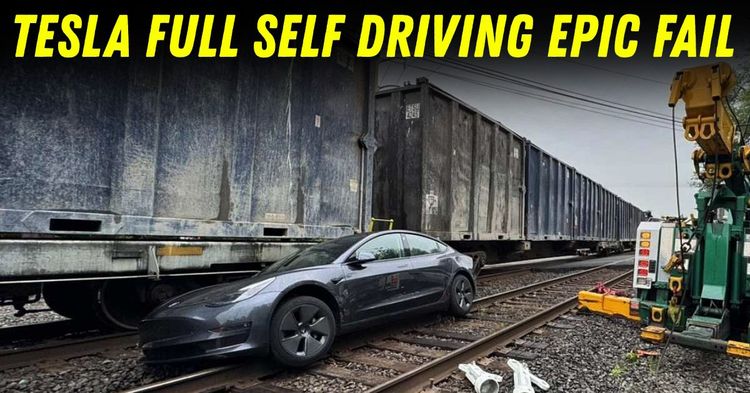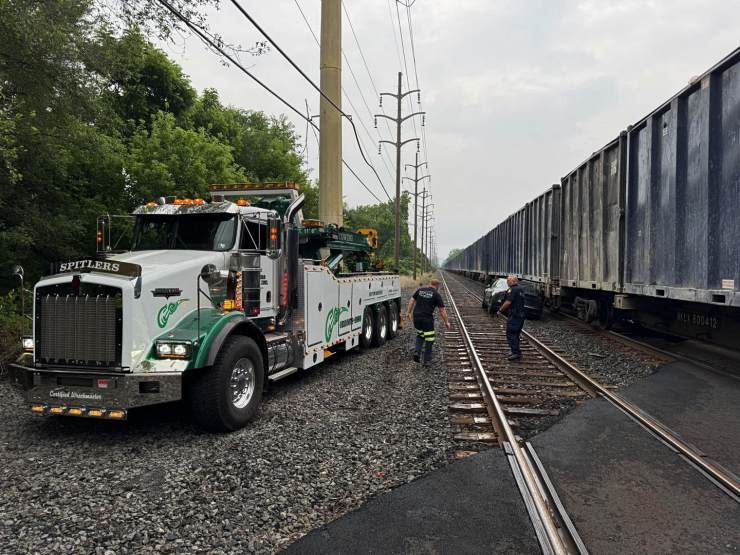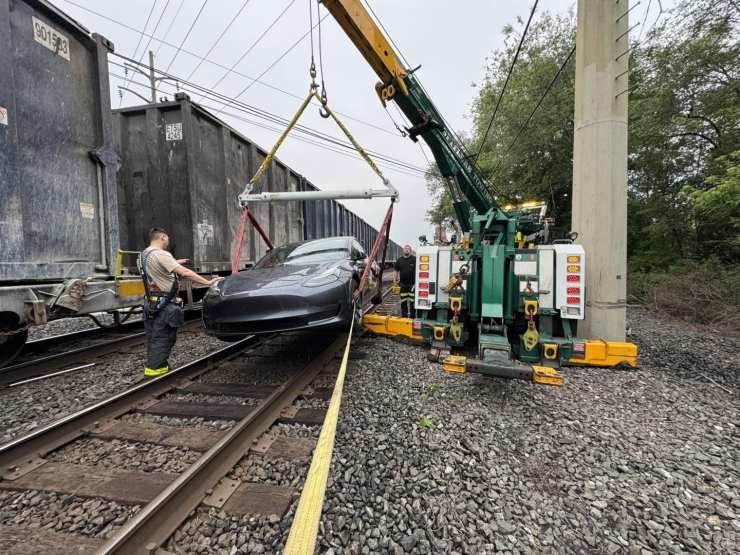Tesla Model 3 Hits Train After Full Self-Driving Mode Leads It To Railway Track


The American electric vehicle manufacturing giant Tesla's cars are known for their self-driving capabilities. However, at the end of the day, these cars are machines, and they can fail on some occasions. Unfortunately, when they fail, they cause accidents, which could also become fatal at times. Recently, a new incident has been reported from Pennsylvania, USA, in which a Tesla Model 3 went onto the railway track and was then damaged by an incoming train.
As per the reports, what recently happened was that at around 5:30 on a Saturday morning, a Tesla vehicle turned left onto a railway track. It has been mentioned that at the time, this vehicle was being driven using the Tesla Self-Driving mode. This incident has been reported from Berks County, Pennsylvania, USA.
This particular Tesla Model 3 drove 40–50 feet down the railway line before it came to a stop. Thankfully, all the passengers were able to get off the vehicle quickly. They were alert, and as a result, they immediately and safely evacuated the vehicle before any collision occurred.

They were also able to collect all of their personal belongings from the vehicle as well. Reportedly, soon after this, a train on an adjacent track hit this Tesla slightly. Thankfully, only the side mirror of this vehicle was clipped by the train, and there were no damages to the structural components of this particular Tesla.
Soon after this minor crash but major failure of Tesla Full Self-Driving (FSD), the fire department officials highlighted their concerns. It was mentioned that moving the Tesla with a standard flatbed tow truck might damage the high-voltage lithium-ion battery.

Also, they added that the towing could damage an EV battery and cause it to ignite. It could also cause thermal runaway, which could result in a difficult-to-extinguish fire. So, as a preventive measure, the fire department decided to deploy a crane to lift the vehicle from the tracks.
For those who may not be aware, Tesla Full Self-Driving mode, or FSD, is similar to ADAS level 2. However, unlike other ADAS systems, which use LiDAR and radar sensors or HD mapping, the Tesla FSD only uses camera-based vision and neural nets. Many believe that this system is not as reliable as the sensors, and in a lot of complex scenarios like railroad crossings, the Tesla system fails.
Unfortunately, the above incident of a Tesla vehicle turning towards the railway tracks is not a first-of-its-kind incident. Back in 2024, a similar incident took place in which a Tesla vehicle turned left onto train tracks while in Autopilot. The driver of this Tesla continued driving down the tracks while looking for an exit. Thankfully, he managed to escape by running a red light, barely avoiding a train.

On the flipside, a Tesla vehicle once also managed to save the life of a man as well. What happened was that a Tesla owner was suffering from dehydration and dangerously high blood glucose levels. During this time, he was alone and had no immediate access to assistance.
So, to save himself, he started driving his Tesla towards the hospital and engaged the autonomous driving feature, which the company had recently launched. As a result of it, he managed to reach the hospital 13 miles away and was then treated, and his life was saved. Without any human intervention, the Tesla Model 3 skillfully helped him reach the hospital.